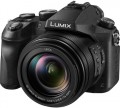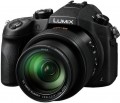DxOMark rating
The result shown by the camera in the DxOMark ranking.
DxOMark is one of the most popular and respected resources for expert camera testing. According to the test results, the camera receives a certain number of points; The more points, the higher the final score.
Total MP
The total number of individual light sensitive dots (pixels) provided in the camera's sensor. Denoted in megapixels - millions of pixels.
The total number of MPs, as a rule, is greater than the number of megapixels from which the frame is directly built (for more details, see "Effective number of MPs"). This is due to the presence of service areas on the matrix. In general, this parameter is more of a reference than practically significant: a larger total number of MPs with the same size and effective resolution means a slightly smaller size of each pixel, and, accordingly, an increased likelihood of noise (especially at high ISO values).
Effective MP number
The number of pixels (megapixels) of the matrix directly involved in the construction of the image, in fact — the number of points from which the captured image is built. Some manufacturers, in addition to this parameter, also indicate the total number of MPs, taking into account the service areas of the matrix. However, it is the effective number of MPs that is considered the main indicator — it is this that directly affects the maximum resolution of the resulting image (see “Maximum image size”).
A megapixel is 1 million pixels. Numerous megapixels ensures high resolution of the captured photos, but is not a guarantee of high-quality images — much also depends on the size of the sensor, its light sensitivity (see the relevant glossary items), as well as hardware and software image processing tools used in the camera. Note that for small matrices, high resolution can sometimes be more of an evil than a blessing — such sensors are very prone to the appearance of noise in the image.
Light sensitivity (ISO)
The sensitivity range of a digital camera matrix. In digital photography, light sensitivity is expressed in the same ISO units as in film photography; however, unlike film, the light sensitivity of the sensor in a digital camera can be changed, which gives you more options for adjusting shooting parameters. High maximum light sensitivity is important if you have to use a lens with a low aperture (see Aperture), as well as when shooting dimly lit scenes and fast-moving objects; in the latter case, high ISO allows you to use low shutter speeds, which minimizes image blur. However, note that with an increase in the value of the applied ISO, the level of noise in the resulting images also increases.
Aperture
Aperture of the lens installed in the camera or supplied with it in the kit (for models with detachable optics).
In a simplified way, this parameter can be described as the ability of the lens to transmit light - in other words, how much the light flux weakens when passing through the optics. It is believed that two main indicators affect the characteristics of light transmission: the size of the relative opening of the lens and its focal length. Aperture is the ratio of the first indicator to the second; in this case, the size of the active hole is taken as one and is generally omitted when recording, as a result, such a recording looks, for example, like this: f / 2.0. Accordingly, the larger the number after the fraction sign, the lower the aperture ratio, the less light the lens transmits.
Zoom lenses (zoom lenses), as a rule, have different aperture values for different focal lengths. For such optics, two values of this parameter are indicated in the characteristics, for the minimum and maximum focal lengths, for example, f / 2.8–4.5. There are also vario lenses that maintain a constant aperture over the entire range of focal lengths, but they are much more expensive than analogs with variable aperture.
The high light transmission of the lens is important if the camera is planned to be used for shooting in low light conditions or for shooting fast moving objects: high-aperture optics allow you to shoot at low sensor sensitivity (which...reduces the likelihood of noise) and at low shutter speeds (at which moving objects are less blurry) . This parameter also determines the depth of field of the imaged space: the higher the aperture ratio, the smaller the depth of field. Therefore, for shooting with artistic background blur (“bokeh”), it is recommended to use fast lenses.
Focal length
Focal length of the camera lens.
Focal length is such a distance between the camera matrix and the optical center of the lens, focused at infinity, at which a clear and sharp image is obtained on the matrix. For models with interchangeable lenses (
mirrorless cameras and MILC, see “Camera Type”), this parameter is indicated if the camera is supplied with a lens (“kit”); Let us recall that, if desired, optics with other characteristics can be installed on such a camera.
The longer the focal length, the smaller the viewing angle of the lens, the higher the degree of approximation and the larger the objects visible in the frame. Therefore, this parameter is one of the key for any lens and largely determines its application (specific examples are given below).
Most often in modern digital cameras, lenses with a variable focal length are used: such lenses are able to zoom in and out of the image (for more details, see "Optical Zoom"). For "DSLRs" and MILC, specialized optics with a constant focal length (fixed lenses) are produced. But in digital compacts, "fixes" are used extremely rarely, usually such a lens is a sign of a high-end model with specific characteristics.
It should be borne in mind that the actual focal length of the lens is usually given in the characteristics of the camera. And the viewing angles and the general purpose of the optics are determined not only by this parameter, but also
...by the size of the matrix with which the optics are used. The dependence looks like this: at the same viewing angles, a lens for a larger matrix will have a longer focal length than a lens for a small sensor. Accordingly, only cameras with the same sensor size can be directly compared with each other in terms of lens focal length. However, to facilitate comparisons in the characteristics, the so-called. EGF - focal length in 35 mm equivalent: this is the focal length that a lens for a full frame matrix having the same viewing angles would have. You can compare by EGF lenses for any matrix size. There are formulas that allow you to independently calculate the equivalent of 35 mm, they can be found in special sources.
If we talk about a specific specialization, then the EGF up to 18 mm corresponds to ultra-wide-angle fisheye lenses. Wide-angle is considered "fixed" optics with EGF up to 28 mm, as well as vario lenses with a minimum EGF up to 35 mm. Values up to 60mm correspond to "general purpose" optics, 50 - 135mm are considered optimal for shooting portraits, and higher focal lengths are found in telephoto lenses. More detailed information about the specifics of various focal lengths can be found in special sources.Optical zoom
The magnification factor provided by the camera by using the capabilities of the lens (namely, by changing its focal length). In models with interchangeable lenses (see “Camera type”), indicated for the complete lens, if available.
Note that in this case the magnification is indicated not relative to the image visible to the naked eye, but relative to the image produced by the lens at minimum magnification. For example, if the characteristics indicate an optical zoom of 3x, this means that at the maximum magnification, objects in the frame will be three times larger than at the minimum.
The degree of optical zoom is directly related to the range of focal lengths (see above). You can determine this degree by dividing the maximum focal length of the lens by the minimum, for example 360mm / 36mm=10x magnification.
To date, optical zoom provides the best "close" image quality and is considered to be superior to digital zoom (see below). This is due to the fact that with this format of work, the entire area of \u200b\u200bthe matrix is constantly involved, which allows you to fully use its capabilities. Therefore, even among low-cost models, devices without optical zoom are very rare.
Full HD (1080)
The maximum resolution and frame rate of video captured by the camera in
Full HD (1080p).
The traditional Full HD video resolution in this case is 1920x1080; other options are more specific and practically do not occur in modern cameras. Regarding the frame rate, it is worth noting first of all that a normal (not slow-motion) video is shot at a speed of up to 60 fps, and in this case, the higher the frame rate, the smoother the video will be, the less jerks will be noticeable when moving in the frame. If the frame rate is
100 fps or higher, this usually means that the camera has a slow-motion video mode.
File recording formats
File formats in which the camera can record video. Given that the footage is designed to be viewed on an external screen, you should make sure that the playback device (DVD player, media centre, etc.) is able to work with the appropriate formats. At the same time, many camera models themselves can play the role of a player by connecting to a TV via an audio / video output or HDMI (see the corresponding paragraphs of the glossary). And if the video materials are to be viewed on a computer, you should not pay special attention to this parameter at all: problems with format incompatibility in such cases rarely occur, but are usually solved by installing the appropriate codec.

